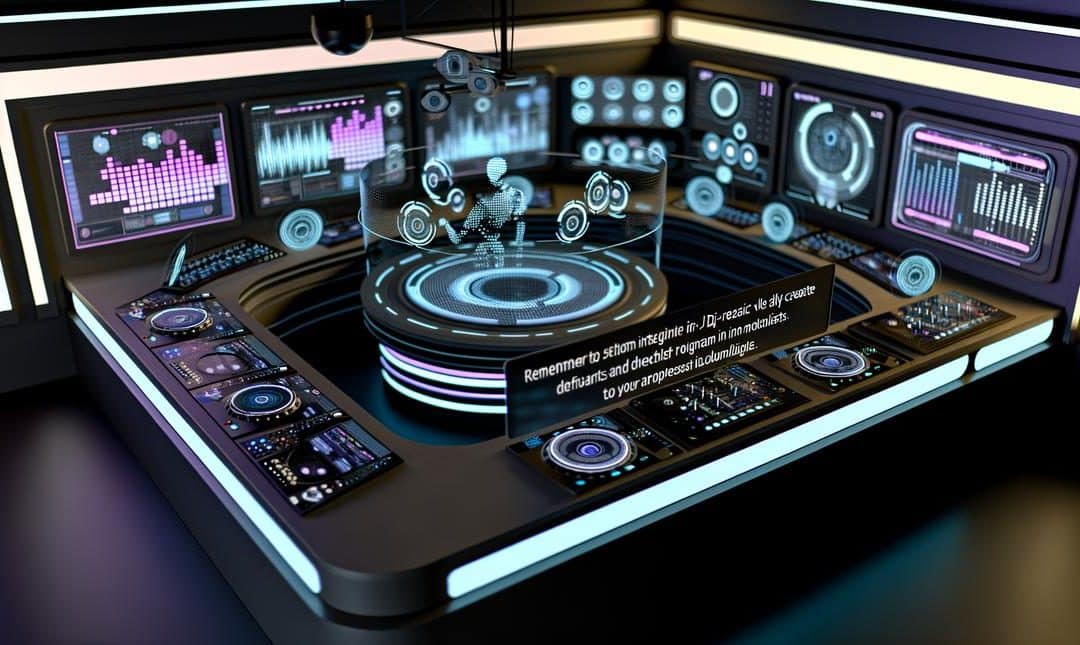The emergence of AI-backed radio stations promises to redefine broadcasting, trading human hosts and curators for dynamic playlists and real-time AI conversations. This leap in technology not only optimizes performance and reduces costs but also invites broadcasters to harness AI-driven innovations for an unparalleled listening experience.
The Rise of AI in Broadcasting
Radio is changing.
Traditional studios are giving way to software. Playlists are scheduled by algorithms that learn rules, rights, and mood. The voice between tracks is generated, not hired, reading the room and keeping tempo without coffee breaks. I was sceptical, then I heard a late night show built with ElevenLabs and a smart scheduler, and, perhaps unfairly, I did not miss the presenter.
What makes this work is orchestration. A playout system selects the next track, an AI DJ adds real time banter, traffic, weather, sponsor lines, and handles slip ups with latency low enough to feel live. If you want the technical meat, look at real time voice agents, speech to speech interface. The stack also manages ad spots, compliance logs, and music reporting with no human in the loop.
For businesses, the draw is blunt. Cut headcount, remove rota headaches, launch new formats fast. Spin up a pop up station for a product drop. Or an in store channel across 200 locations. Results vary, I think, but the unit economics are hard to ignore.
Dynamic Playlists: The New Era
Playlists can now shape themselves to each listener.
An AI reads thousands of tiny signals in real time, skip rates, replays, volume spikes, commute length, even local weather. It maps micro moods, focus, hype, nostalgia, then builds a sequence that rises, breathes, lands. Not just more of the same. It surprises, gently. Generative models score transitions, write smart segues, surface a forgotten b side, and, sometimes, craft a short re edit that makes the next hook hit harder. It feels hand made, even when it is not.
This is radio that behaves like a private mix, at scale. Listeners stay longer, invite friends, and feel seen. I did too, the first time my 7am mix eased into a rain friendly acoustic version I had forgotten. Strange, perhaps, but it worked.
Streaming gets close, though it stops at personal queues. Spotify excels at that. AI radio goes further, it adapts to crowd pulses while tailoring per ear. Those same signals prime the on air chat layer next. For background, see Personalisation at scale, leveraging marketing automation to deliver hyper personalised customer experiences.
Real-Time Banter Without Humans
Real-time banter can be automated.
After your playlist hooks them, the voice keeps them.
Quips and tiny stories land between tracks, and no presenter is on shift.
The AI reads context from calls, texts, and comments.
It spots intent and mood, then pivots on cue.
Morning commute, bright and brisk. Late night, softer, almost confessional, perhaps. I think that is the point.
Listeners ask for weather, traffic, gigs, even gossip.
It answers fast, with tasteful personality, not canned scripts.
It remembers names and quirks, then greets them like regulars.
Next time, it says, “Back with you, Sara.”
Make every mic break feel personalised, without losing control.
Guardrails keep the banter on brand and lawful.
Profanity filters and consent prompts are baked in.
For nuts and bolts, see real-time voice agents, speech-to-speech interface.
The same engine quietly routes messages and timestamps clips, setting up the automation story next.
Operational Efficiency and Automation
Automation is the silent engine behind Radio 2.0.
While the on air patter runs itself, the real gains sit backstage. AI schedules music against target clocks, paces ad rotations, and files compliance logs. No rummaging through spreadsheets. No late night traffic reconciliations.
One playout brain can run the lot. Think smart clocks, live loudness normalisation, profanity filters, silence detection, and instant failover to a backup stream. I still like a red dashboard alert, just in case, yet it rarely fires. A single tool like Radio.co can orchestrate ingest, tagging, playout, and reporting from one screen.
Costs drop fast. Stations cut producer hours, shrink overnight staffing, and avoid penalties for missed ad delivery. I have seen back office workload fall by half, sometimes more, after one clean rollout. There are wrinkles at first. Perhaps a musician name gets mis tagged, you fix it once and move on.
The same playbook suits other sectors. Map every repetitive task, hand it to machines, and keep humans for judgement. For a broader view across operations, see how small businesses use AI for operations. Next, we will look at turning these gains into growth.
Leveraging AI for Business Growth
Revenue follows attention.
AI radio does more than cut workload, it unlocks growth levers. Segment listeners in real time, then serve tailored sets. Let an AI host greet VIPs by name, mention local weather, even a store offer. Ad loads shift by mood, time, and purchase intent. Breakfast can push app installs, late night can sell merch. The same playbook suits gyms, retail floors, and hotels.
You do not need a big team, you need a plan for growth. Alex brings tools, training, and a crowd that shares wins. Start with Master AI and Automation for Growth, then plug in Zapier where it helps. Prefer guidance, perhaps choose done with you setup.
You still want nuance, I think so. Strategy stays human. For a tailored plan, contact Alex Smale, and future proof your revenue.
Final words
AI DJs and Radio 2.0 mark a key advancement in broadcasting, offering tailored playlists and engaging dialogue without human staff. Businesses can adopt similar AI-driven solutions to streamline operations, reduce costs, and stay competitive. The opportunities unlocked by AI are vast, promising not just evolution in radio, but inspiring innovations across all industries.

